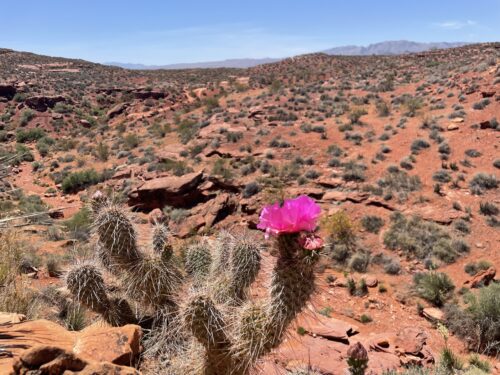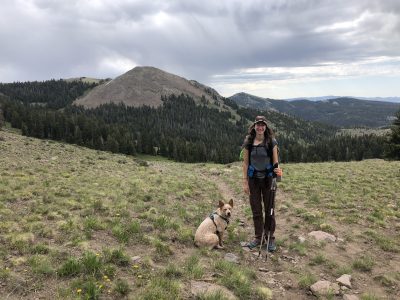Halting highway through iconic red cliffs is key to quality of life in Southern Utah
1st of Dec 2023

By Holly Snow Canada
(The following first appeared as a letter to the editor in the St. George News.)
The iconic red cliff wonderland crowning our city is protected, for now, from a four-lane highway thanks to tens of thousands of public comments and a recent U.S. District Court decision. The proposed Northern Corridor Highway would pierce the heart of our beloved backyard treasure, the Red Cliffs National Conservation Area. We can all breathe a sigh of relief while land management agencies reconsider the devastating effects of the proposed highway.
This respite for Red Cliffs demonstrates the power of collective action and the triumph of informed, passionate local citizens and worldwide advocates for public lands. As Utah’s population grows, Utahns need to continue to work together to strike a sustainable balance between conservation and development to ensure high quality of life for all. A smart growth approach equitably improves long-term economic resilience and prosperity while ensuring that our children and grandchildren can enjoy the wonders of our cherished landscapes for generations to come.
We are beyond lucky to live near Red Cliffs’ spectacularly beautiful open space. This rugged outdoor playground is frequented by families, hikers, mountain bikers, equestrians, birdwatchers, photographers and more. Protection of this precious place is inextricably linked to our quality of life in Washington County.
The Court’s decision is not only a reprieve for St. George’s iconic landscape, but also averts major economic loss. Red Cliffs is a popular destination for outdoor enthusiasts and the world-class recreation attracts over 200,000 visitors annually. The Greater Zion Convention and Tourism Office markets Washington County as “some of the most stunning scenery in the world” and relies on intact natural landscapes and 600 miles of trails on public lands to create a $600-million-dollar economic impact.

The proposed four-lane highway would dramatically change the recreational experience and resources within the Red Cliffs National Conservation Area by damaging 15 popular trails, irreparably harming indigenous communities’ cultural resources, negatively impacting tourism and recreation economic benefits, permanently eliminating 275 acres of Mojave desert tortoise critical habitat (and indirectly impacting an additional 2,333 acres), and negatively impacting over 20 additional at-risk species, including the Gila monster, burrowing owl and kit fox.
Utah State University’s 2023 Utah People & Environment Poll Descriptive Report revealed that outdoor recreation options and access to wilderness and public lands are very important or extremely important to the lifestyle of 78% of survey respondents and 68% would feel less attached to Utah if the native plants and animals that live here disappeared.
Despite broad community support for public land protection and for viable highway alternatives that alleviate our area’s traffic needs without impacting public lands, local elected officials continue to support the construction of a four-lane highway through the heart of Red Cliffs National Conservation Area.
Conserve Southwest Utah and its partners will continue to fight to keep protected land protected and oppose the unlawful, unnecessary and unwise proposed Northern Corridor Highway.
I encourage you to attend the Bureau of Land Management’s Northern Corridor Highway open house on Wednesday, Dec. 6, from 4:30-7:30 p.m. at the Dixie Convention Center, so that you can ask questions and share your highway concerns with the agency staff. The public comment period is open until Dec. 21 here.
Holly Snow Canada is executive director at Conserve Southwest Utah, the lead plaintiff in a 2021 lawsuit filed by Advocates for the West challenging the proposed four-lane Northern Corridor Highway through Red Cliffs National Conservation Area in southwestern Utah.

